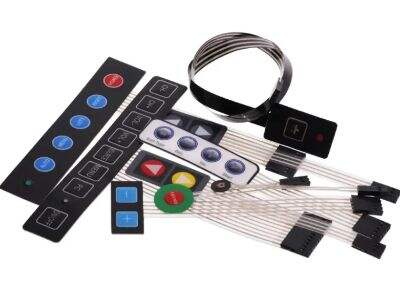Membrane switches are vital components in many electronic equipments. They help dictate how a device is used by responding when something touches you back (or, more often, when you touch them back with your finger). Membrane switches really need to be durable in order to have a longer life span. It is necessary to also test how durable they are to help ensure they will hold up to a great deal of use under various conditions.
Why Strength Testing is Significant for Membrane Switches
The sit-up test: Testing to see how strong a membrane switch is, is like exercising to see how strong you are. You should check how strong the Membrane Switch is; otherwise it is easy to break when people use it every day. If your favorite toy kept breaking after you had only played with it a few times, that wouldn’t be fun either, right? Testing is a way for engineers to ensure that membrane switches are durable and can be relied upon to work well.
Looking Closely for Damage
You can test the strength of a membrane switch by examining it closely for damage. This is what is known as a visual inspection. The FPC membrane switch is closely examined for wear and tear by the engineers at Soushine. If they discover cracks, scratches or other damage, they’ll recognize that the membrane switch would be inadequate. By spotting these issues early, they are able to make alterations to extend the life of the membrane switch.
Testing Long-Term Strength
Engineers test a life cycle to determine how long a membrane switch will last. In this test you simply press the Silicone membrane switch buttons a lot of times to see how good they work. Like counting how many times you can jump rope before getting out of breath, engineers want to know how many times a membrane switch can be activated before it fails. By running such tests, Soushine can ensure their membrane switches are durable and can be used for a long time.
Testing in Tough Conditions
Membrane switches can be subjected to really rough environments, such as extreme temperatures or even high humidity. To help determine how well a membrane switch can survive these extreme situations, engineers at Soushine have tested the switches using environmental stress testing. These tests help determine whether the switches can maintain good performance even under tough conditions. Engineers also want to ensure that regardless of the location of the device, the membrane switch will continue working.
Testing to See How Well The Switch Sticks
An important part of a membrane switch is how well it adheres to the thing it is on. There are ways to assess this, and engineers do, by something known as peel strength testing. This test calculates the force required to pull the membrane switch from the device. The higher is the peel strength, the more consistent is the membrane switch. With various methods such as peel strength testing, Soushine can guarantee their membrane switches are strong and will last for many years.


